
water n.
a colourless, odourless liquid
Yet water, particularly a water surface, has so many wonderful effects which are often taken for granted, or not even noticed, by those whose very existence depends on it in everyday life...
For further details of any picture, move the mouse over the picture and click on it.
For enquiries (including prices and availability) please contact Bill Pike
Bill Pike lives and works in Berkshire, England.
The images on this site have been produced by scanning 35mm transparencies using a slide scanner. The colours and quality of the images may not therefore be representative of the original paintings.
The main motivation behind my pictures is based on having the ability to capture all-too-brief 'optimum visual moments' whenever they are met in Nature. I started painting water after travelling down the Norwegian Coast in 1972, then having been first accidentally captivated by interaction of the steamer's bow wave with fjordside reflections, I now try to look for the most beautifully coloured reflections, expecially when they combine with intriguing wave-form compositions.
The water surface sometimes acts as a sensitive mirror of meteorological fluctuations (e.g. gusts of wind and passing showers). Wave formations associated with gravity and surface tension can be made by a swimming bird or fish rising to feed, as well as by rocks or plants disturbing the surface from below...sometimes simultaneously with effects from above, e.g. spreading 'circlets' of raindrops.
| Longbow | Memories |

|
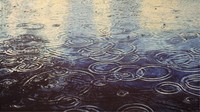
|
Natural tidal effects; eddying, upwelling and the fluid dynamics of water in motion...e.g. boundary lines between water flowing at very different speed and producing eddy-vortices...can interact with speedboat wakes or reflected figures on a riverbank to produce a beautiful scene...often very unexpectedly!
| Garibaldi Lake | Cherry Blossom |
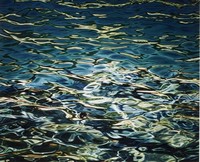
|

|
But what is the chance of having time to sketch an interesting waterscape which lasts only a matter of split-seconds, or at most, a few minutes? Understandably, much sympathy has been expressed for Claude Monet's self-confessed despair at being unable to paint quickly enough outdoors when rapid variations of light changed his impression of a landscape "every two minutes".
| Camber Sands | St Swithins Day |
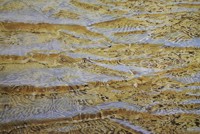
|
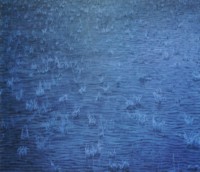
|
An answer to this problem of 'freezing a moment in time' is to capture photographically. I particularly like a 'telephoto-zoom' lens on a 35mm single-lens reflex camera for this purpose because it (1) gives the eye a possibility of an 'out-of-body' experience (2) allows variable magnification of otherwise quite small areas of water to be quickly appraised and recorded. However, care needs to be taken when that most important aspect of 'local colour' is then represented in subsequent paintings. Therefore, I only use my own photographs; in attempting to make accurate compensations for whatever particular film manufacturer's colour-transparency bias, both from my notes and memory of the scenes.
| Rainbow | Merger |
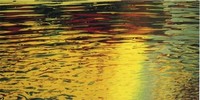
|
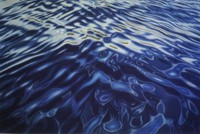
|
In selecting this small sample of ten illustrated paintings, I've not used strict chronological order, but rather a succession which emphasises variety or surfaces. The book is intended to provide a small, portable exhibition of pictures that people would not otherwise be able to see.
| Skookumchuk Rapids | Voyage |
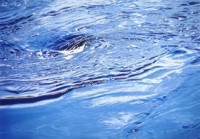
|
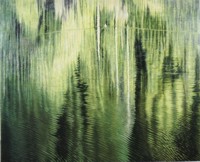
|
During my early teens, a lot of satisfaction came from making simple maps for geography and history subjects. I later realised that cartography was an extremely useful means of recording a scene and asserting one's presence in it; maps were also very condusive to 'trigger' the memory at a later date. For this reason, the maps which accompany these paintings are not made to any particular scale, but aim to locate my position and view when I first saw those special features which initially excited my interest. They include notes on the prevailing wind and weather, plus information on prominent reflecting objects, and the Sun's orientation relative to north.